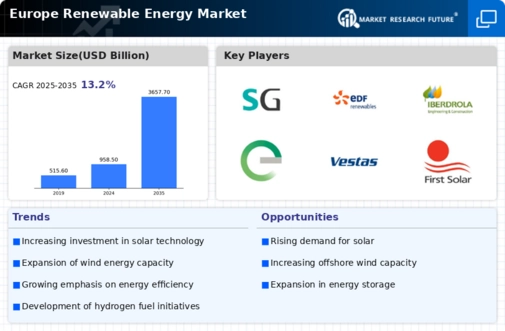Europe Renewable Energy Market Summary
The Europe Renewable Energy market is poised for substantial growth, projected to reach 3657.7 USD Billion by 2035.
Key Market Trends & Highlights
Europe Renewable Energy Key Trends and Highlights
- The market valuation is estimated at 958.5 USD Billion in 2024, indicating a robust starting point for growth.
- From 2025 to 2035, the market is expected to expand at a compound annual growth rate of 12.95%.
- By 2035, the market is anticipated to increase nearly fourfold, reaching 3657.7 USD Billion.
- Growing adoption of renewable energy technologies due to increasing environmental awareness is a major market driver.
Market Size & Forecast
| 2024 Market Size | 958.5 (USD Billion) |
| 2035 Market Size | 3657.7 (USD Billion) |
| CAGR (2025-2035) | 12.95% |
Major Players
Siemens Gamesa, EDF Renewables, Ørsted, ACCONIA S.A., Iberdrola, Enel Green Power, Vestas, Brookfield Renewable Partners, First Solar, Canadian Solar


















Leave a Comment